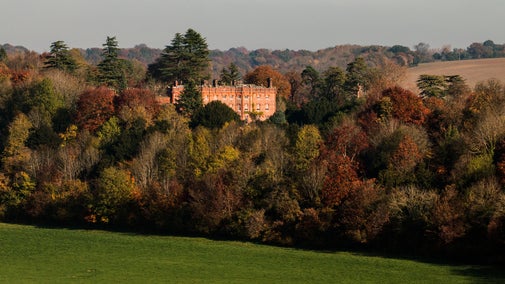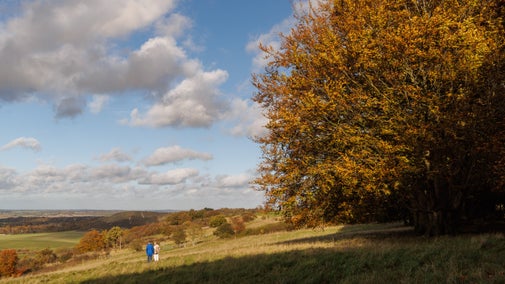Hambleden and Pheasant’s Hill trail
Oxfordshire, Buckinghamshire & Berkshire
This circular 5-mile walk starts and ends in the flint and red-brick village of Hambleden, taking in the beech woods of the Hambleden Valley and the hamlet of Pheasants Hill while offering great views across the valley.
Near to
Chilterns CountrysideStart point
Pay-and-display public car park at Hambleden village. Grid ref: SU785865. Postcode: RG9 6RP.Trail information
Restrictive covenants
Some of the land in this walk is protected by the Greenlands restrictive covenant. This is a legal agreement dating from 1944 between the National Trust and Lord Hambleden, which means the land is protected in perpetuity. The land has various private owners, but any changes to the land or the buildings require the prior consent of the National Trust. The route follows public rights of way, including parts of the Chiltern Way. Please always follow the Countryside Code.
More near here
Hambleden Mill to Henley-on-Thames circular river walk
This circular Thames walk takes in a historic watermill, the Henley Regatta course, views across the Thames Valley and quiet stretches of river with the chance to spot wildlife.

The best of Coombe Hill walk
Take a gentle circular stroll to see Coombe Hill highlights on rare chalk grassland, with panoramic views across Aylesbury Vale and Chequers, the prime minister’s retreat.

Chiltern Hills three-in-one walk
Discover a challenging 8½-mile scenic walk linking three National Trust places in the Chiltern Hills: West Wycombe, Bradenham and Hughenden. Longer and shorter routes can be completed depending on your choice.

Watlington Hill short walk
This walk offers memorable views over the Vale of Oxford and Chiltern Escarpment, as well as abundant wildlife and birdlife amongst the site's chalk grassland and woodland habitats.

Get in touch
Chilterns Countryside, c/o Hughenden estate, High Wycombe, Buckinghamshire, HP14 4LA
Our partners

We’ve partnered with Cotswold Outdoor to help everyone make the most of their time outdoors in the places we care for.
You might also be interested in
Things to see and do in the Chilterns Countryside
Discover the countryside sites of the Chilterns. Find the best viewpoints, walk through ancient woodland or pick a quiet spot to watch for wildlife.

Walking
Explore some of the finest landscapes in our care on coastal paths, accessible trails, woodland walks and everything in between. Find the best places to walk near you.

Hughenden
Country home of the Victorian statesman Benjamin Disraeli

Ashridge Estate
Ancient trees, rolling chalk downlands and lush meadows in an area of outstanding natural beauty

Follow the Countryside Code
Help to look after National Trust places by observing a few simple guidelines during your visit and following the Countryside Code.

Cotswold Outdoor: our exclusive walking partner
Learn about the National Trust’s ongoing partnership with Cotswold Outdoor. Find out how they help us care for precious places and the exclusive discount available for National Trust supporters.

